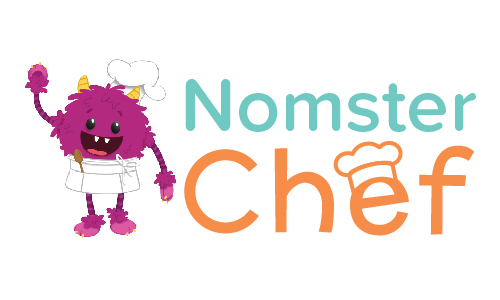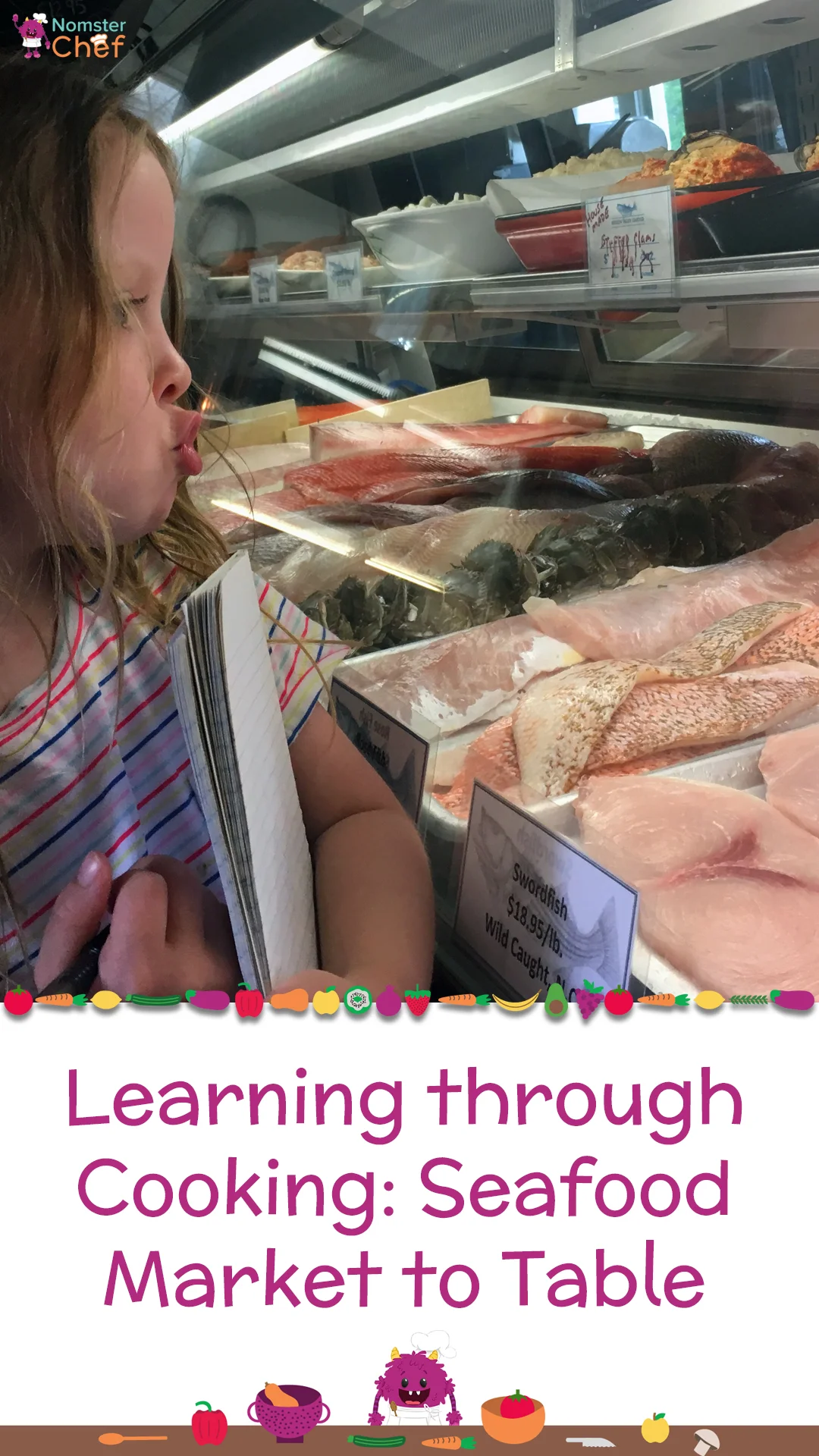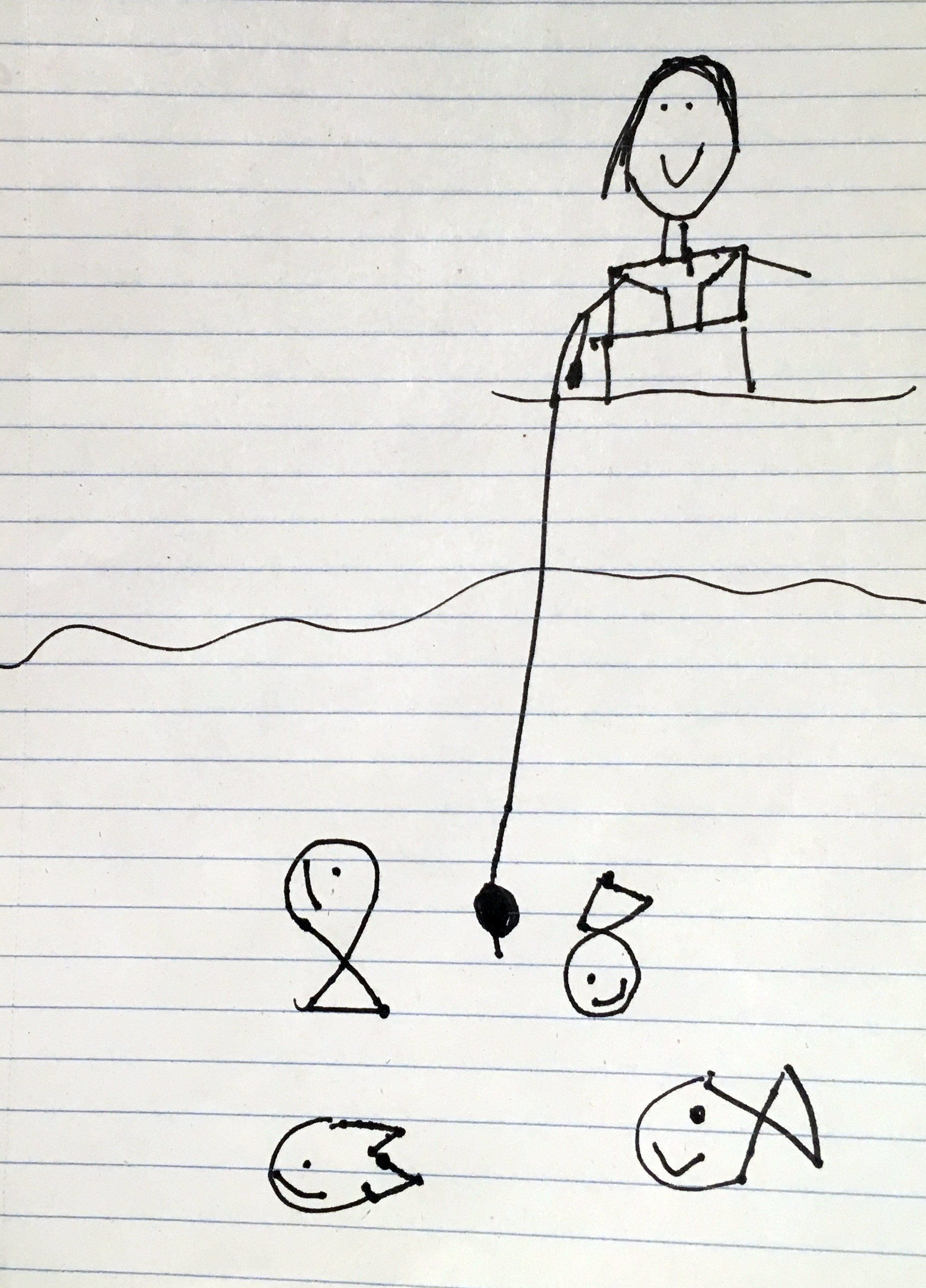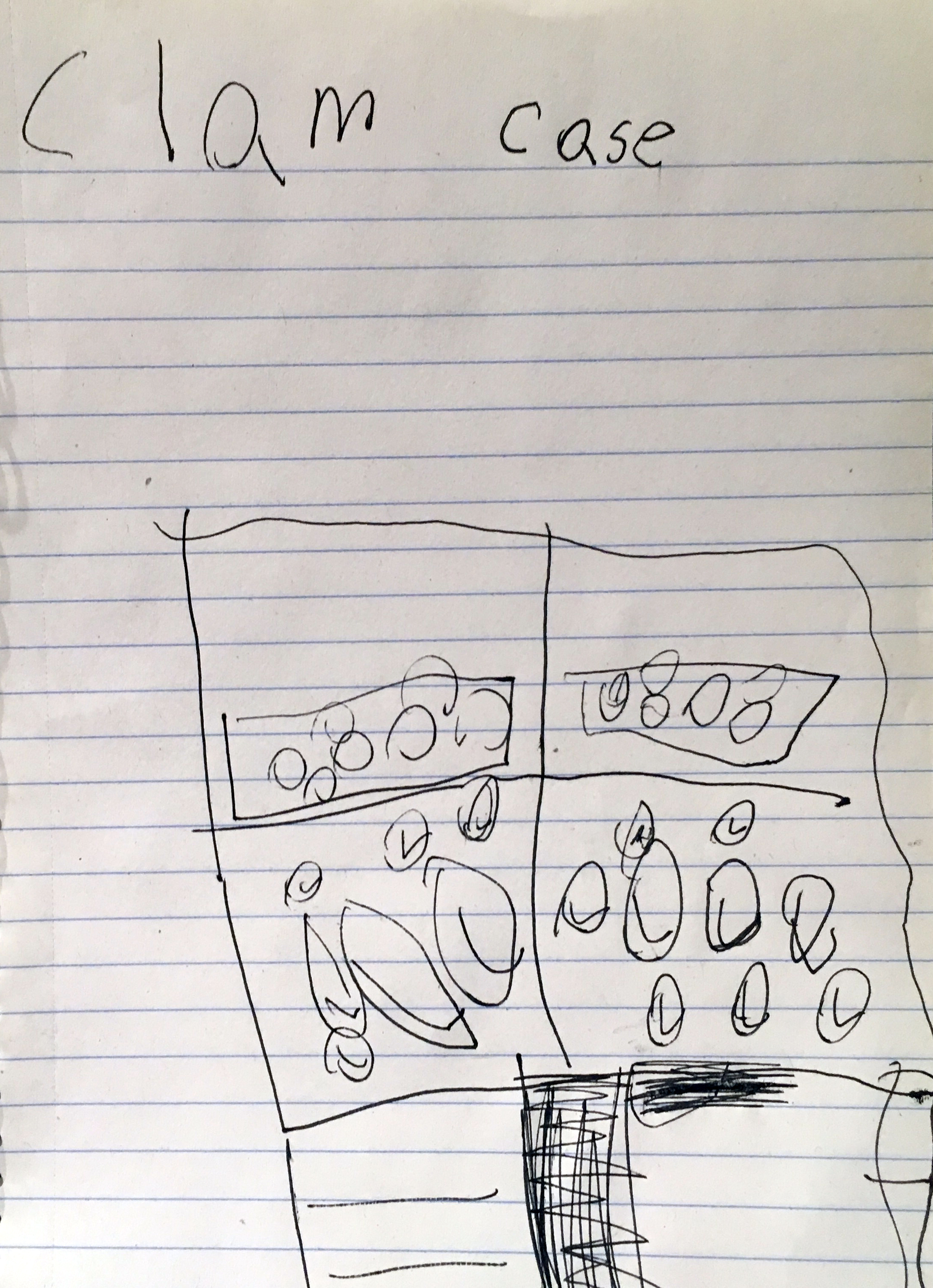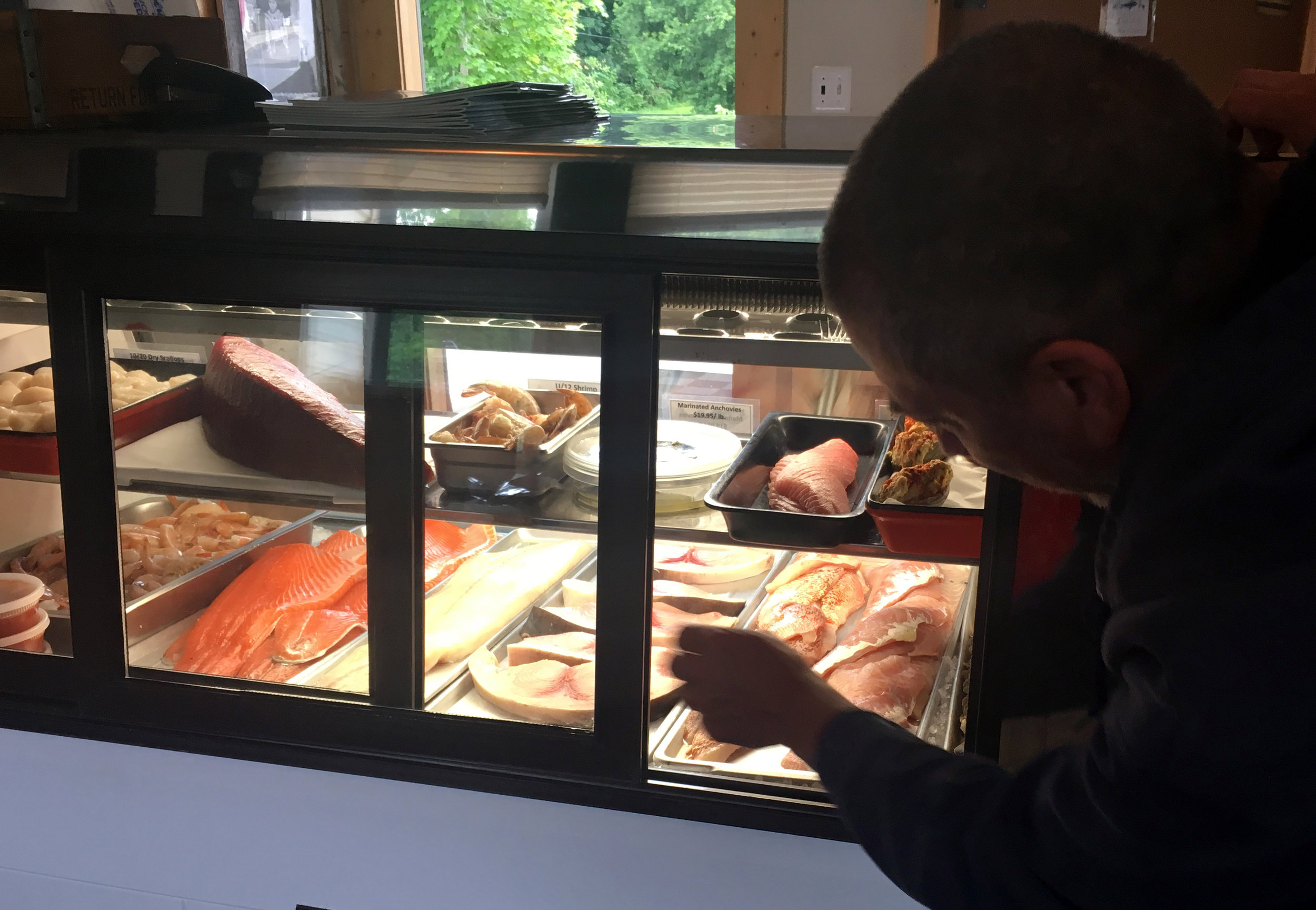Ah, Fish. It's the uncharted sea of most children’s dinner plates. Learning about and cooking fish and other kinds of seafood can be a great way to introduce your child to novel proteins that might not currently be present in their diets. You want to say “YEAH! Let’s do this!” but inside you are thinking “How the heck do I actually cook a fish!? And, alas - will my children eat it!?” If you are like most parents, introducing something new may bring anxiety to the dinner table. Say no more! Junior Assistant Chef Emma and I are here to rescue you from your "fish fears" and "seafood struggles" by touring a local Seafood market. While we did visit a Seafood Market, our focus for this article will be on fish! Tune in another time for more seafood adventures!
We paid a visit to Hudson Valley Seafood in Central Valley, NY for a tour and interview with their in-house master of fish and seafood cooking Chef John Vargo. Chef John made a unique journey of the market complete with playful banter on what makes sustainable fish selling and cooking possible in today’s food marketplace. Read on to hear what Chef Emma learned about fish! We were glad to have this knowledge while we prepared our favorite dish.
What is a Fish Market?
You and your kids may be curious about such a specific store or what's often known as a “specialty market.” What can a fish market offer that local grocery stores can’t? Well, a fish market is a special place because they have more knowledge and staff to help with all things “fish and seafood” related. Most specialty markets make it their business to know what kinds of foods are best to sell to their customers and how those customers can prepare that food in their homes. Also, another good thing about specialty markets is they have a greater variety and often fresher products. Hudson Valley Seafood takes great pride in offering a range of sustainable choices in fish (such as ahi tuna, salmon, cod to name a few), seafood (fresh oysters, lobster and the like) acquired from the New Fulton Fish Market at Hunts Point in the Bronx and prepared dishes (warm and ready to go chowders, seafood salad, and other tasty dishes). Often, with specialty stores, you are supporting local business efforts, so your purchase also contributes to that area’s economy.
The Tour
During a tour of Hudson Valley Seafood, we were behind the scenes! Chef John made sure to give us an inside-out look at fish loaded cases, tanks of seafood, the kitchen area (including the biggest pot we have EVER seen) and their two-rooms-big walk-in freezer! Often, Emma would take copious notes to document the experience including information about their scales that held over 500 lbs. and see where all their product is stored to keep it fresh for customers.
Here Emma is taking notes in a giant pot they may use to make chowder or other seafood dishes (Don’t worry, Emma did not become soup!). She said, “Mommy, this important for Nomster Chef. I need to write this down so kids can learn!” She happily took notes and helped me ask Chef John lots of important questions.
If taking your kids on a Seafood Market adventure sounds exciting, grab the kids and find a local market that specializes in this type of product. If you plan to spend a significant about of time there with your kids it might help to phone the store first and see if you can ask questions to experts and learn more about their business. Try and schedule a time when they are less busy so the store workers can devote quality attention to your little one’s inquiries. Questions to ask during the tour may be 1) Where do you get your fish? 2) What do you recommend as a good first fish for eating? 3) What are some favorite ways you prepare fish? 4) How should we store the fish at home? Finally, it always helps to support this type of local business. So, make sure don’t leave without buying a fillet or two or 12!
What we learned about Sustainable Seafood
Part of the reason we selected Hudson Valley Seafood as a focus for this article is they make it their mission to provide sustainable seafood for the area. You and the kids in your life may be wondering, “What is Sustainable Seafood?” Sustainable seafood is food that is caught or farmed in a manner that takes into account the long-term life of a species as well as thinking about that effect on the health of the ocean. It further means those that agree to ensure that “fishing will last a long time,” according to Chef John. It’s a concept that is still in the works globally and can only succeed with more cooperation. For more information on sustainability, you can visit the Marine Stewardship Council's site at https://www.msc.org/.
Another thing to keep in mind when purchasing seafood and fish is cost. While it is better to buy sustainable products it can also be on the expensive side. It goes with the concept that like organic veggies and grass-fed meat - while the benefits are healthy to our bodies and our environment, they can take more out of our pockets. Thus, a seafood adventure may be a once in a while thing or a special occasion idea. Keep in mind, that fish does pack more protein than other meats, so you will be consuming less in volume. Some good lower cost options are catfish or squid.
What we learned about the importance of eating fish
Fish and seafood can be a tasty way to provide your family nutrition. But what exactly are you getting when you munch on food from the sea? Fish and seafood provide protein, calcium, vitamin D along with omega-3 fatty acids essential for brain and body health. We learned from Chef John about the healthy benefits of eating fish - that is a good protein for our bodies! Often, most fish pack in more protein than most meats like chicken and beef per serving. That’s a fun fact that parents can highlight/repeat/mention when touring a fish market.
Chef Advice: Cooking Fish
Besides health benefits, fish also offers a novel cooking experience. Fish and seafood need a bit more careful attention as some varieties are delicate when cooked, which is different from how we prepare beef, poultry, and veggies.
Chef John does beautiful things with the market’s product. He also offered many great tips for first-time fish cooks and eaters! He provided “new to eating seafood and fish” advice. Chef Vargo suggests that “shrimp and catfish are great first choices” because of their texture and fat content. A fattier fish like salmon is also a good choice for first-time palates as most eaters are drawn to the buttery richness and taste of fat in foods - like butter, cheeses and some meats. If you are not new to fish, you can look to your past and what you liked before. “Base it on your memories” he recommends. Maybe there was a family event during the holidays or a cookout during a summer sunset that makes you recall a certain fish more fondly.
Over time with each, he believes that with regular cooking and practice, anyone can “heighten their interest” and come up with creative combinations on their own. If you have the ability and the equipment, “fried fish is great,” and a crunchy batter can make anything taste delicious. More manageable ways to introduce to young ones is not masking it with batter but grilling with fresh herbs (Chef Vargo recommends rosemary and basil as good additions), poaching, sauteing or broiling. Cooking fish is “a matter of time you have to devote” as it needs a bit of care to get a desired texture and taste you can your family will love.
Hands-on-Activity: Cooking fish with a kid chef
How can we make catfish?
Chef Emma has long been a fan of fish. We want to share with you our in-house preparation of Hudson Valley’s catfish. The crispy outside perimeter of the fish from the broiler’s heat may make a regular fish eater of your kid(s). Catfish is an excellent choice because it has a higher fat content and crisps up well in the broiler. As a first fish to get your kids excited about new food, it is an excellent beginning step.
Materials
Catfish Fillet (Flounder, Sole or Trout Can Work too)
Olive Oil
Kosher Salt
Pastry Brush
Foil
Small Cookie Sheet
Broiler
Steps
Step 1: Prep the Fish
Keep it simple. Let the fish taste come through. Only olive oil and salt are needed! Pat the fish dry with a paper towel. Cover the baking sheet with foil. Drizzle with olive oil. Use a pastry brush to spread it around. Sprinkle the fish with a little kosher salt.
Step 2: Oven Time!
Have a grown-up set the broiler to high. Place the fish in the broiler for 4 minutes. After 4 minutes, rotate the fish 180 degrees. Reset the time for 6 minutes. Make sure the edges crisp. If they don’t, you may have a larger fillet, and it will need 1 or 2 extra minutes. The fish is done when it is opaque and flakes - which means when you pierce the fish with a fork you are able to pull some of it away in “flakes” with only a gentle pull. If you have to use more force or the fish doesn’t move - you know it isn’t done!
Step 3: Taste and Reflect
Plate the fish. Give everyone a fork for a taste test. What do they think? How does it taste? What do we like about the texture? How do we find the crisp edges to be? What can be done next time (Adding fresh herbs? A squeeze of lemon at the end? A dried spice mix?)?
Talking Points
Introducing new foods takes time. Some fish may not be of their liking. The important thing is to keep trying, think of different preparation possibilities and be on the “fish team” if this is something you think you and your family would benefit from eating.
Don’t limit ideas to main dishes. You can also include appetizers, snacks or party platters! Other variations can be based on what is available at home. How can we make a new fish recipe? What kind of seasoning can we add to make it taste interesting?
Keep talking about seafood and sustainability: At the grocery store: “They are selling fish today! What kind of fish do you see? Let’s talk to the person behind the counter and ask them where they get their fish!
Key Takeaways
Let kids lead the way when they come up with a new fish recipe.
Explain that sustainable seafood is making a difference in our oceans and seafood population so we can all enjoy it for years to come with help.
OTHER POSTS IN THE "LEARNING THROUGH COOKING" SERIES
Learning through Cooking: Problem-Solving
